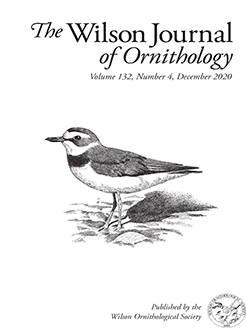We present information on the nests, eggs, clutch size, and nestlings of the Chestnut Seedeater (Sporophila cinnamomea), a migratory, globally vulnerable species restricted to the natural grasslands of South America. Despite its vulnerability, there is currently a remarkable lack of basic information on this species. We searched for nests from October to March 2018–2019 and 2019–2020 at 2 grassland areas in southern Brazil and monitored a total of 98 nests of 50 different breeding pairs throughout this period. Birds placed their nests on shrubs, clumps, and herbaceous plants, 42–51 cm above humid or dry ground, or water. Nests were low cups built out of native grass stems, inflorescences, and rootlets, held together with spider webs. Nests measured 4.86 cm (SD 0.40) largest internal diameter, 4.17 cm (SD 0.37) smallest internal diameter, 6.31 cm (SD 0.57) largest external diameter, 5.42 cm (SD 0.51) smallest external diameter, 4.04 cm (SD 0.45) internal height, and 4.74 cm (SD 0.52) external height. Clutches had 1–3 eggs. Eggs were mostly ovate, with a whitish to light beige background mottled with blotches and spots of darker beige and brownish tints. The mean egg size was 16.15 mm (SD 1.07) by 12.11 mm (SD 0.34) (n = 23). Results are part of ongoing research in the southern Brazilian grasslands, which aims to fill the gaps in the knowledge of the breeding biology of Chestnut Seedeater and thereby contribute to its conservation.
How to translate text using browser tools
14 September 2021
Nests, eggs, clutch size, and nestlings of the Chestnut Seedeater (Sporophila cinnamomea), a vulnerable species of South America
Jonas Rafael R. Rosoni,
Carla S. Fontana,
Caio J. Carlos
ACCESS THE FULL ARTICLE
Brazilian Pampa
breeding
conservation
grasslands
reproductive traits





